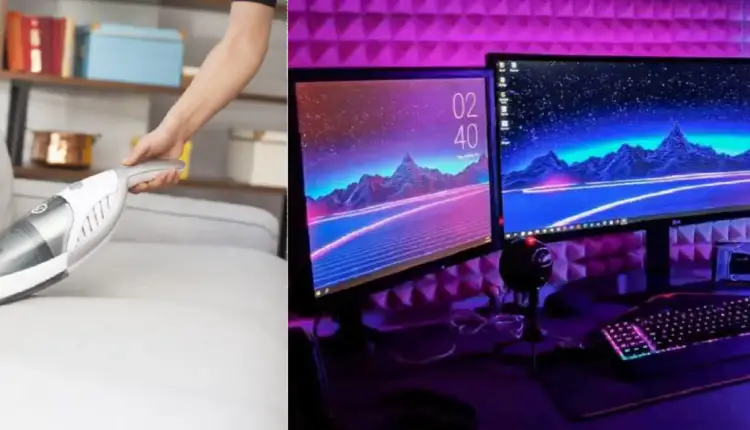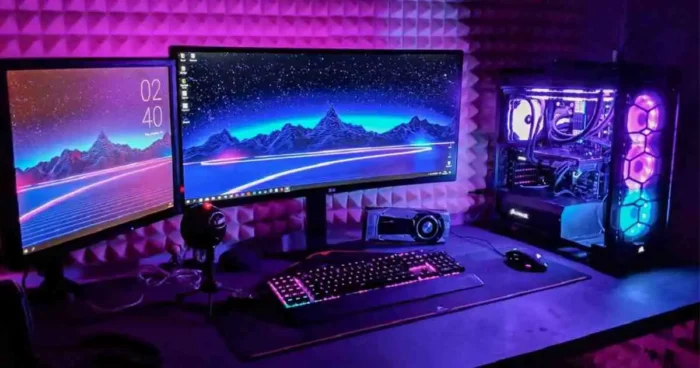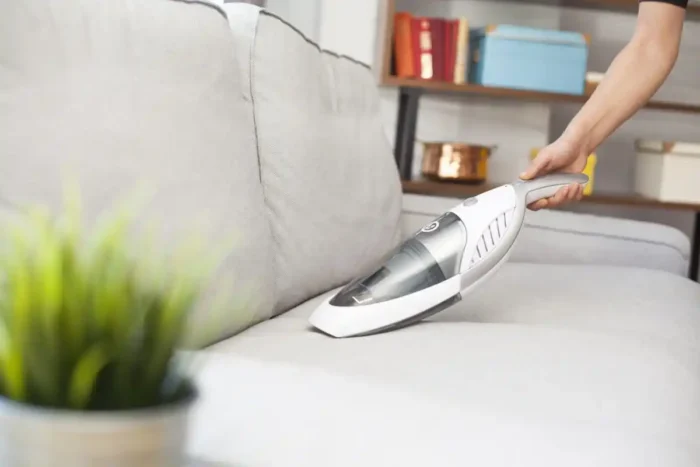
The Do’s and Don’ts of Cleaning Your PC: Can You Really Use a Vacuum?
As a tech enthusiast, I understand the importance of maintaining a clean PC. A clean PC not only looks good but also performs better.
Over time, dust and debris accumulate inside your PC, causing it to overheat and potentially damage the hardware. However, cleaning your PC is not as simple as just wiping the exterior with a cloth.
In this article, I will share the do’s and don’ts of cleaning your PC, including whether or not you can use a vacuum.
Why cleaning your PC is important

Before we dive into the do’s and don’ts of cleaning your PC, let’s first discuss why cleaning your PC is important. Over time, dust, dirt, and other debris accumulate inside your PC. This buildup can cause your PC to overheat, leading to reduced performance and potential hardware damage.
Dust can also clog up your PC’s fans, causing them to work harder and make more noise. In extreme cases, excessive dust buildup can even cause your PC to shut down.
Cleaning your PC is especially important if you have pets or smoke indoors, as these factors can increase the amount of dust and debris in your PC. Regular cleaning can help prolong the lifespan of your PC and keep it running smoothly.
The dangers of using a vacuum on your PC

One common question people have when it comes to cleaning their PC is whether or not they can use a vacuum. While it may seem like a convenient option, using a vacuum to clean your PC can do more harm than good.
Vacuums generate static electricity, which can damage sensitive PC components such as the motherboard, RAM, and graphics card. Additionally, the suction power of a vacuum can be too strong for delicate PC parts, potentially dislodging or damaging them.
Finally, vacuums can also create a lot of dust and debris, which can be blown back into your PC and make the problem worse.
The Do’s of cleaning your PC
Now that we’ve covered what not to do, let’s talk about some of the do’s of cleaning your PC. Here are some tips to keep in mind:
Do use compressed air
Compressed air is a safe and effective way to remove dust and debris from your PC. You can purchase compressed air in a can from most electronics stores.
When using compressed air, make sure to hold the can upright and use short bursts to avoid spraying liquid onto your components.
Do use a microfiber cloth
A microfiber cloth is a gentle and effective way to clean the exterior of your PC. Microfiber cloths are soft and won’t scratch your PC’s surface. You can also use a microfiber cloth to gently clean the interior of your PC, such as the fan blades and vents.
Do unplug your PC before cleaning
Before you start cleaning your PC, make sure to unplug it from the power source. This will help prevent any electrical shock or damage to your PC.
The Don’ts of cleaning your PC
Now that we’ve covered some of the do’s of cleaning your PC, let’s talk about the don’ts. Here are some things to avoid:
Don’t use water or liquid cleaners
Water and liquid cleaners can damage your PC’s components, causing them to short-circuit or corrode. Never use water or liquid cleaners to clean your PC.
Don’t touch PC components with your bare hands
Your hands contain oils and other substances that can damage your PC’s components. When cleaning your PC, avoid touching any components with your bare hands. If you need to touch a component, use an anti-static wrist strap to ground yourself and prevent static electricity.
Don’t use abrasive materials
Abrasive materials such as paper towels or sponges can scratch your PC’s surface and damage its components. Avoid using anything abrasive when cleaning your PC.
Recommended tools for cleaning your PC
Now that we’ve covered the do’s and don’ts of cleaning your PC, let’s talk about some of the tools you’ll need. Here are some recommended tools for cleaning your PC:
Compressed air
As mentioned earlier, compressed air is a safe and effective way to remove dust and debris from your PC. You can purchase compressed air in a can from most electronics stores.
Microfiber cloth
A microfiber cloth is a gentle and effective way to clean the exterior of your PC. Microfiber cloths are soft and won’t scratch your PC’s surface.
Soft-bristled brush
A soft-bristled brush can be used to gently remove dust and debris from your PC’s components, such as the fan blades and heatsinks.
Step-by-step guide to cleaning your PC
Now that you have your tools ready, let’s go through the steps to clean your PC:
- Turn off your PC and unplug it from the power source.
- Open the case and use compressed air to blow out any dust and debris.
- Use a soft-bristled brush to gently remove any remaining dust and debris from your PC’s components.
- Use a microfiber cloth to gently clean the exterior of your PC.
- Close the case and plug your PC back in.
Tips for maintaining a clean PC
To keep your PC clean and running smoothly, here are some tips to follow:
Keep your PC off the floor
Keeping your PC off the floor can help prevent dust and debris from accumulating inside. Consider placing your PC on a desk or shelf.
Keep your PC away from pets and smokers
As mentioned earlier, pets and smoking can increase the amount of dust and debris in your PC. Keep your PC in a smoke-free and pet-free area if possible.
Clean your PC regularly
Regular cleaning can help prevent excessive dust buildup and prolong the lifespan of your PC. Aim to clean your PC every 3-6 months.
Common mistakes people make when cleaning their PC

Here are some common mistakes people make when cleaning their PC:
Using a vacuum
As we discussed earlier, using a vacuum to clean your PC can actually do more harm than good.
Using water or liquid cleaners
Water and liquid cleaners can damage your PC’s components, causing them to short-circuit or corrode.
Touching components with bare hands
Your hands contain oils and other substances that can damage your PC’s components. Avoid touching any components with your bare hands.
Conclusion: Keeping your PC in tip-top shape
Cleaning your PC is an important part of PC maintenance. By following the do’s and don’ts of cleaning your PC and using the recommended tools, you can keep your PC in tip-top shape.
Remember to clean your PC regularly and keep it away from pets, smokers, and the floor. And most importantly, never use a vacuum or liquid cleaner to clean your PC.
